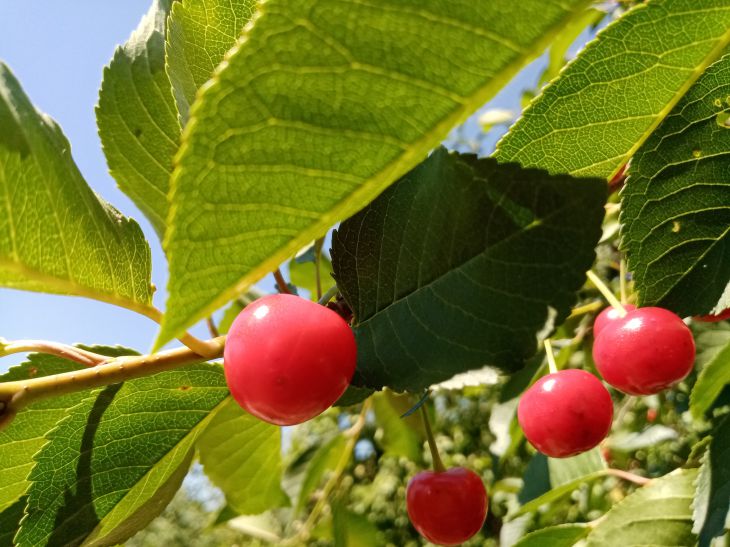Cherry: the importance of choosing the right neighbors and what crops are prohibited to combine with
The popular stone fruit in the form of cherries grows in most gardens, providing people with juicy, healthy and aromatic berries.
Due to the prevalence of trees, it may seem that there is nothing complicated in their cultivation. However, this is not so. Cherry is a rather capricious plant. Especially in the matter of choosing neighbors.
Reasons why cherry is very demanding of neighbors
The most important factor for the quality development of cherries is the sun. The trees are small in size, and therefore they cannot grow well next to tall crops with a spreading crown.
The second important point is the type of root system. Cherry has very developed roots with numerous shoots on the surface of the earth. The root system of a nearby plant should be even more powerful or very modest. Otherwise, the roots will intertwine and take nutrients from each other.
Cherry also does not tolerate plants that emit active substances into the air like a repellent. They can have a negative effect on the yield of stone fruit crops.
Positive Neighbors for Stone Fruit Trees
Cherry goes well with its stone fruit relatives. Sweet cherry, plum, peach and apricot can be planted in close proximity to cherry. They will help each other in pollination, increasing the yield. But it is important to remember that the crop loves light. Trees should not be higher than 3-3.5 m.

Other positive neighbors are hawthorn and rowan. They do not conflict in terms of the root system, allowing the neighbor to bear fruit well. In addition, rowan and hawthorn are scared away by aphids, who love to feast on cherries.
When choosing a neighbor, it is worth paying attention to honeysuckle. It will be a good companion plant, having an excellent root system and a small size that does not create shade.
Bad neighbors for cherries
With some types of garden crops, cherry bears fruit extremely poorly. In particular, next to pome fruits. They are very active, take all the water and nutrients. Cherry will constantly be in a depleted state.
Also contraindicated are trees and tall shrubs with a very spreading crown, such as linden, oak, maple, elm, etc. It is far from the best idea to plant currants or gooseberries next to cherries because of their abundant root system, which takes away all the nutrients.
It is strictly forbidden to have a walnut tree next to it. This crop releases toxic substances into the air, which can cause the cherry tree to wither.
Moreover, the tree has a spreading crown with very dense foliage that blocks the light. Nightshade crops can also be completely banned. They are often attacked by all sorts of pests and diseases that will spread to the cherry tree.
The area around cherry trees should be landscaped with crops with exceptionally neat crowns, non-poisonous and without an aggressive nature. The best option is to plant herbs or flowers that attract pollinators.
